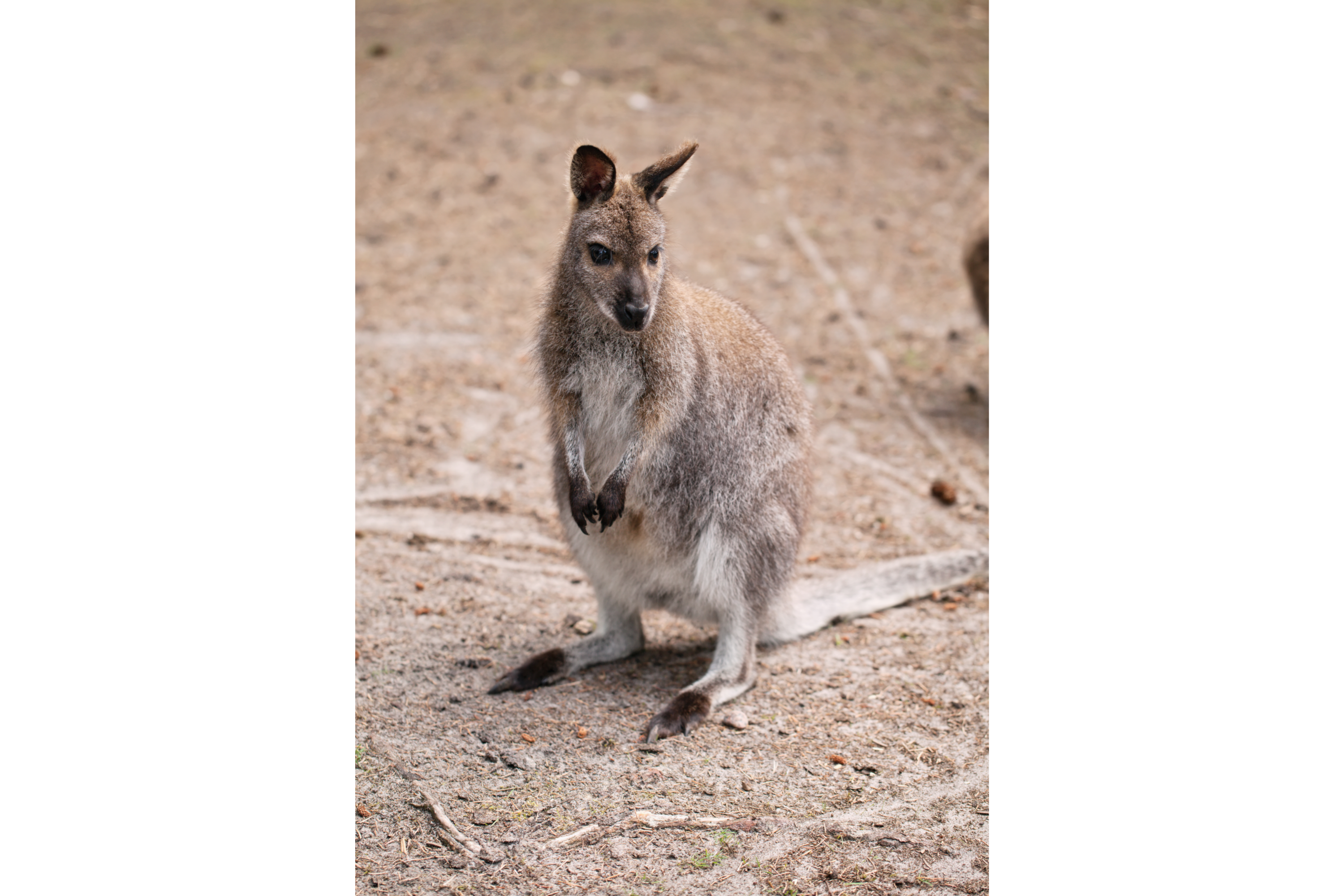Tammar wallaby
(Macropus eugenii)

Description
The tammar wallaby (Macropus eugenii or Notamacropus eugenii), also known as the dama wallaby or darma wallaby, is a small macropod native to South and Western Australia. Though its geographical range has been severely reduced since European colonisation, the tammar wallaby remains common within its reduced range and is listed as "Least Concern" by the International Union for Conservation of Nature (IUCN). It has been introduced to New Zealand and reintroduced to some areas of Australia where it had been previously eradicated. Skull variations differentiate between tammar wallabies from Western Australia, Kangaroo Island, and mainland South Australia, making them distinct population groups. The tammar wallaby is among the smallest of the wallabies in the genus Notamacropus. Its coat colour is largely grey. The tammar wallaby has several notable adaptations, including the ability to retain energy while hopping, colour vision, and the ability to drink seawater. A nocturnal species, it spends the nighttime in grassland habitat and the daytime in shrubland. It is also very gregarious and has a seasonal, promiscuous mating pattern. A female tammar wallaby can nurse a joey in her pouch while keeping an embryo in her uterus. The tammar wallaby is a model species for research on marsupials, and on mammals in general. Its genome was sequenced in 2011. The tammar wallaby was seen in the Houtman Abrolhos off Western Australia by survivors of the 1628 Batavia shipwreck, and recorded by François Pelsaert in his 1629 Ongeluckige Voyagie. It was first described in 1817 by the French naturalist Anselme Gaëtan Desmarest, who gave it the name eugenii based on where it was found: an island he knew as Ile Eugene in the Nuyts Archipelago off South Australia, which is now known as St. Peter Island. The island's French name was given in honour of Eugene Hamelin, commander of the ship Naturaliste; whose name is now the specific name of the tammar wallaby. The common name of the animal is derived from the thickets of the shrub locally known as tamma (Allocasuarina campestris) that sheltered it in Western Australia. It is also known as the dama wallaby or darma wallaby.
Taxonomic tree:







